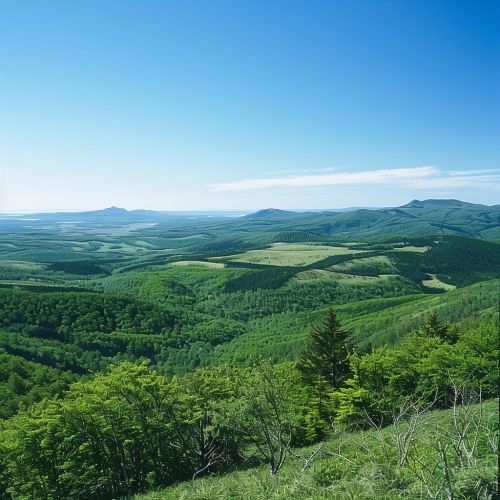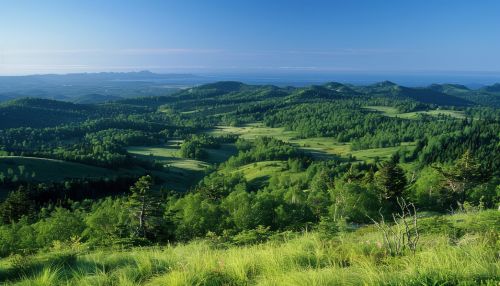History of Hokkaido
Early History
Hokkaido, the northernmost island of Japan, has a rich and diverse history that dates back thousands of years. The earliest known inhabitants of Hokkaido were the Ainu, an indigenous group with a distinct culture and language. Archaeological evidence suggests that the Ainu have lived in Hokkaido for over 10,000 years, long before the arrival of the Japanese.
The Jomon period (14,000–300 BCE) saw the development of a hunter-gatherer culture in Hokkaido, characterized by the creation of intricate pottery and the establishment of semi-permanent settlements. The Ainu culture evolved from the Jomon culture, maintaining many of its traditions and practices.
Medieval Period
During the medieval period, Hokkaido was known as Ezochi, or simply Ezo. The island remained largely isolated from the rest of Japan, with limited contact and trade. The Ainu people continued to thrive, relying on fishing, hunting, and gathering for sustenance. They developed a unique spiritual belief system centered around nature and animal spirits.
In the 13th century, the Mongol invasions of Japan indirectly affected Hokkaido. The Kamakura shogunate, which ruled Japan at the time, sought to strengthen its northern defenses against potential threats. This led to increased interest in Hokkaido and sporadic attempts to establish control over the island.
Edo Period
The Edo period (1603–1868) marked a significant turning point in the history of Hokkaido. The Tokugawa shogunate, which ruled Japan during this time, began to take a more active interest in the island. The Matsumae clan, a powerful samurai family, was granted exclusive trading rights with the Ainu and given control over southern Hokkaido. This led to increased Japanese influence and the establishment of trading posts and settlements.
The relationship between the Ainu and the Japanese was complex and often fraught with tension. The Ainu were subjected to harsh trade conditions and exploitation, leading to several uprisings, including the Shakushain's Revolt in 1669. Despite these conflicts, the Ainu continued to resist full assimilation and maintained their cultural identity.
Meiji Restoration and Colonization
The Meiji Restoration of 1868 brought about significant changes in Japan, including the modernization and centralization of the government. Hokkaido, previously known as Ezochi, was officially incorporated into Japan and renamed Hokkaido. The government established the Hokkaido Development Commission to oversee the colonization and development of the island.


The colonization of Hokkaido was driven by several factors, including the need to secure Japan's northern borders, alleviate population pressure on the main islands, and exploit the island's natural resources. The government encouraged Japanese settlers to move to Hokkaido, offering incentives such as land grants and financial support.
The influx of settlers led to significant changes in Hokkaido's landscape and economy. Large-scale agricultural projects were undertaken, and industries such as fishing, mining, and forestry flourished. The construction of infrastructure, including roads, railways, and ports, facilitated the island's development.
Modern Era
In the 20th century, Hokkaido continued to grow and develop. The island played a crucial role during World War II, serving as a base for military operations and a refuge for evacuees from other parts of Japan. After the war, Hokkaido experienced rapid economic growth and modernization, becoming an important center for agriculture, industry, and tourism.
The Ainu people, however, faced significant challenges during this period. They were subjected to assimilation policies that aimed to erase their cultural identity and integrate them into mainstream Japanese society. This led to the loss of traditional practices, language, and land. In recent decades, there has been a resurgence of interest in Ainu culture and efforts to preserve and revitalize their heritage.
Cultural Heritage
Hokkaido's cultural heritage is a unique blend of Ainu traditions and Japanese influences. The Ainu culture is characterized by its deep connection to nature, with rituals and ceremonies centered around animals, plants, and natural phenomena. Traditional Ainu crafts, such as wood carving, embroidery, and weaving, are highly regarded for their intricate designs and craftsmanship.
Japanese culture in Hokkaido has also left a lasting impact. The island is known for its distinctive cuisine, which includes fresh seafood, dairy products, and regional specialties such as ramen and Jingisukan (grilled mutton). Hokkaido is also famous for its festivals, such as the Sapporo Snow Festival, which attracts visitors from around the world.
Economy and Development
Hokkaido's economy has traditionally been based on agriculture, fishing, and forestry. The island is known for its fertile soil and favorable climate, making it a major producer of crops such as wheat, potatoes, and dairy products. The fishing industry is also significant, with Hokkaido being one of Japan's leading producers of seafood.
In recent years, Hokkaido has diversified its economy, with a growing focus on tourism, technology, and renewable energy. The island's natural beauty, including its national parks, hot springs, and ski resorts, attracts millions of visitors each year. The development of high-tech industries and research institutions has also contributed to Hokkaido's economic growth.
